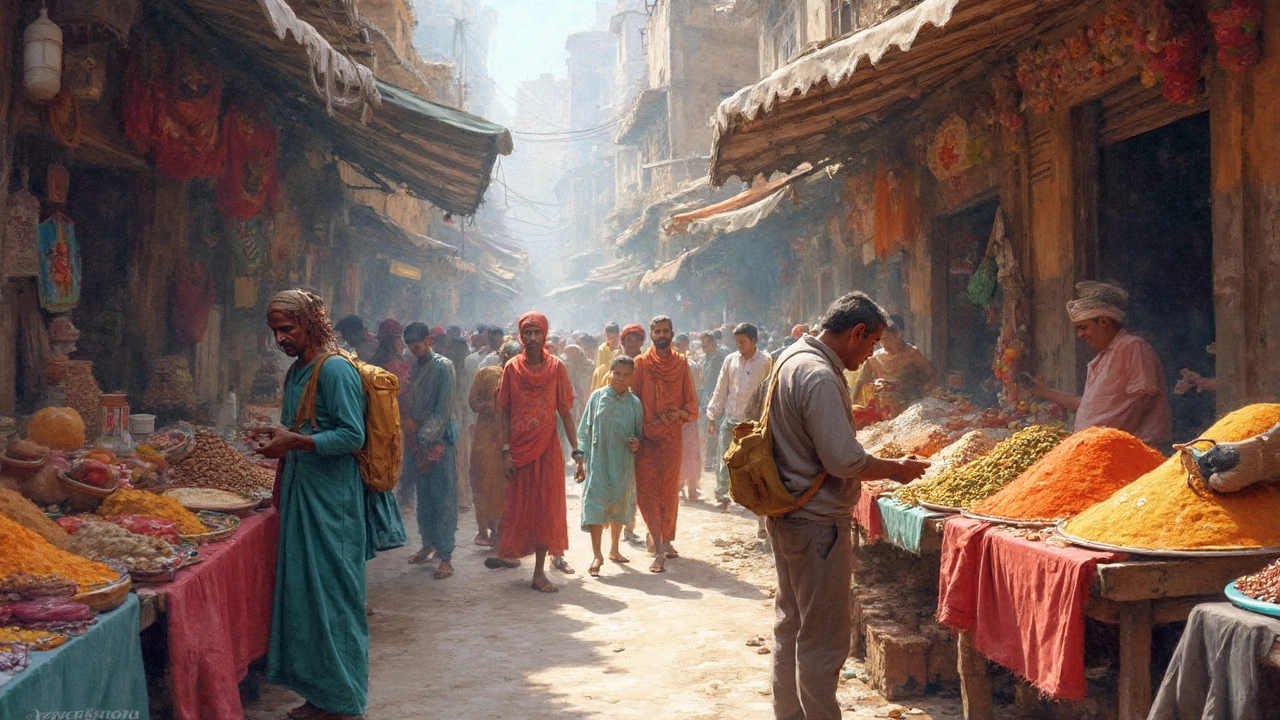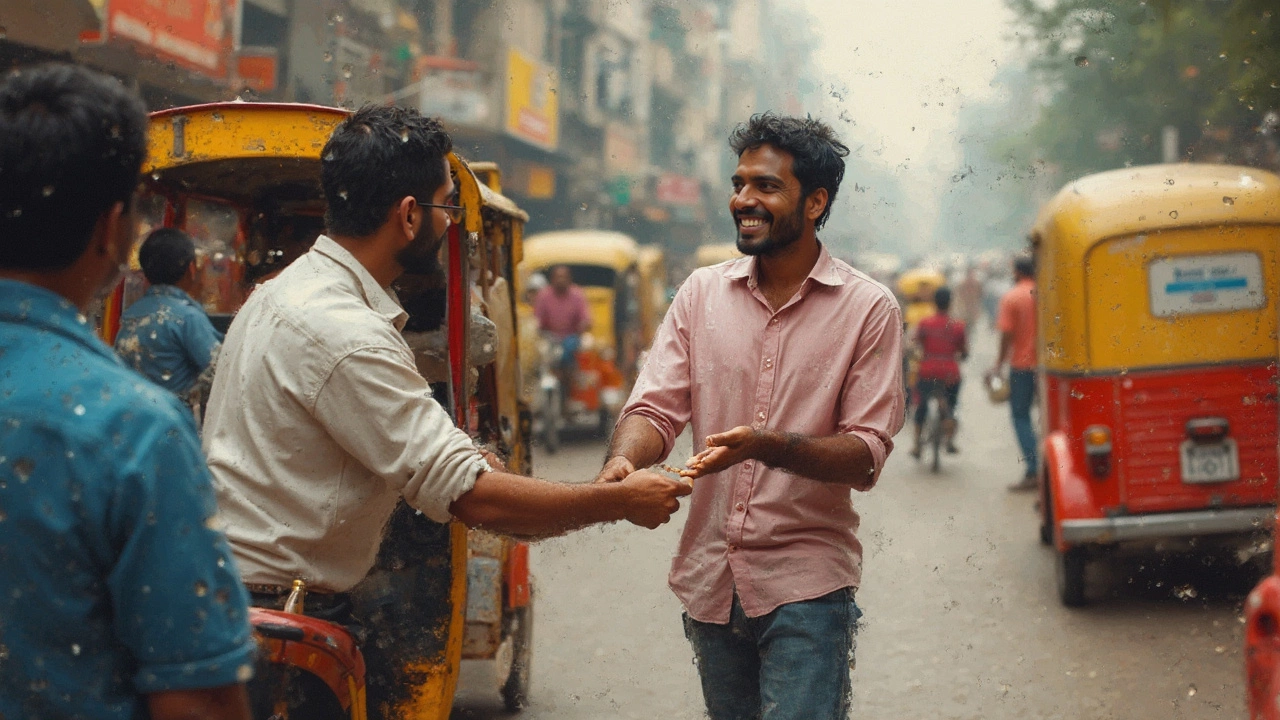Tipping Culture in India: What You Need to Know
 Feb, 9 2025
Feb, 9 2025
When you're traveling in India, figuring out the tipping culture can feel like unraveling a mystery. It's not just about handing over a few extra rupees; it's about understanding the local customs and showing appreciation for good service. So, what's the deal with tipping in India?
Well, it's not as clear-cut as it might be in other places. Tipping isn't embedded in the culture the way it is in the U.S., but that doesn’t mean it's not important. In some cases, it’s an expected part of the service, while in others, it’s entirely up to you.
For instance, let's talk about restaurants. If you're dining at a fancy place or a hotel, leaving a tip of around 5-10% is a nice gesture. In smaller eateries, rounding up the bill is often appreciated. Since the service charge included in bills isn't always shared with staff, your direct tip can make a difference.
- Cultural Context of Tipping
- Where Tipping is Expected
- When Tipping is Optional
- How Much to Tip
- Tipping Tips for Travelers
Cultural Context of Tipping
In India, the practice of tipping, known locally as 'baksheesh,' has deep-rooted connections with its cultural heritage. The concept originates from expressing gratitude and goodwill, but it varies significantly across the country's diverse regions and service sectors.
The tipping in India isn't as uniformly expected as in Western countries. Historically, India had a system where service was often tied to the idea of hospitality rather than a financial transaction. Consequently, the expectation to tip was not pronounced. However, with global tourism and cultural interchange, tipping is now more commonplace.
Regional Differences
India's cultural richness translates to varied tipping practices. In metropolitan cities like Mumbai and Delhi, tipping is more expected, thanks to the influence of international travelers and the cosmopolitan lifestyle. In contrast, in rural areas, tipping might be less common or understood.
Understanding the Social Aspect
In some Indian societies, giving a little extra as a tip is seen as a way of forming a social bond, an opportunity to appreciate someone's service. However, it’s essential to do it with respect to the person's dignity. Be discreet, as openly offering money might be misinterpreted or considered disrespectful.
For instance, if you're in a hotel, tipping the bellboy or housekeeping staff is a friendly gesture, but there's no strict percentage. A small amount, like INR 50-100, is usually enough.
The Modern Take
Today, as more Indians travel abroad and more international tourists visit India, the Indian culture is increasingly blending with global practices. This means that while tipping isn't always obligatory, it's becoming more common, particularly in service industries connected with tourism.
- In higher-end restaurants and hotels, tipping is becoming standard, often incorporated into service charges.
- Drivers, guides, and porters in tourist areas often expect small tips for good service.
Being aware of these nuanced practices helps in having a respectful and enjoyable journey across this vibrant and varied country.
Where Tipping is Expected
Navigating the client-practitioner relationship in India can sometimes feel like a guessing game. However, there are specific situations where it's generally understood that tipping is a norm.
Restaurants and Eateries
In upscale restaurants and hotels, tipping is usually expected and typically ranges from 5-10% of the bill. It's a way to show appreciation for good service. However, watch out for any service charges already included in the bill. While these charges exist, they often don't make their way to the server's pocket, so an additional token of gratitude is usually welcome.
Hotel Staff
When you're at a hotel, the expectations can expand beyond just dining. Tipping the bellboy who helps with your luggage or the housekeeping staff who maintain your room is pretty standard. A small amount, say 50-100 rupees per service, is considered courteous. It’s these gestures that often ensure an even more pleasant stay.
Tour Guides and Drivers
While exploring India, you'll likely interact with tour guides and drivers who work hard to make your experience memorable. For guides, a tip of about 200-500 rupees per day can be appropriate. For drivers, especially if you're using their services for multiple days, tipping around 100-300 rupees per day is common.
Transportation Tips
When using taxis or auto-rickshaws, tipping isn't mandatory, but rounding up the fare, especially for a helpful driver who navigates the wild streets or helps you with luggage, is a gesture many appreciate. In ride-sharing apps, a small tip via the app could also go a long way.

When Tipping is Optional
Tipping in India doesn't come with strict rules, giving you a lot of flexibility. Tipping in India can sometimes be more about the appreciation you want to show rather than an obligation. There are plenty of instances where leaving a tip is optional, and you're free to decide based on the situation and your own experience.
Street Food and Local Eateries
If you're like most travelers who enjoy indulging in tasty street food or local dhabas (roadside restaurants), tipping is generally not a thing here. Vendors and owners usually don't expect tips, but if someone goes above and beyond, a small amount like 10-20 rupees can be a kind gesture.
Using Public Transport
While using services like rickshaws, auto-rickshaws, or buses, tipping isn't usually anticipated. However, if you're haggling with a driver and they've given you a great fare or some local tips, feel free to round up the amount as a thank you. It's a token of gratitude rather than a requirement.
Hotel Services
Travel tips India tell us that certain hotel services like room service or housekeeping are instances where tipping is left up to you. If you've had memorable service, leaving a tip for the staff won't go unnoticed. While it's optional, something between 50-100 rupees is typical, depending on the hotel's class.
Remember, India is a hugely diverse country, and practices can vary widely. In tourist-heavy areas, you might encounter more 'Western' tipping expectations. Ultimately, you're in the driver's seat. Go with what feels right based on the service and your experiences while indulging in cultural tourism in India.
How Much to Tip
Figuring out tipping in a new country can be tricky, especially in a place as diverse as India. The expectations can vary depending on the service, but don't stress—getting it right is easier than you think.
Restaurants and Cafes
When dining out, a tip of 5-10% of your total bill is appreciated in more upscale restaurants and cafes. For everyday eateries, a little less is perfectly acceptable. If the bill already includes a service charge, you can decide if you want to tip extra or if that's sufficient.
Hotels
At hotels, there's a bit more to consider. Porters and bellboys usually expect a small tip of around 50-100 INR for helping with your bags. Housekeeping appreciates a tip of a similar range per night of your stay. If someone goes out of their way to assist you, like the concierge arranging a special excursion, consider tipping more generously.
Transportation
If you’re using a taxi or a ride-sharing service like Uber, rounding up to the nearest 10 INR or more for exceptional service is usual. For rental car drivers or tour guides who spend the day with you, a tip of around 300-500 INR per day is appropriate, reflecting their knowledge and assistance.
Other Services
- Spas and Salons: A tip of 10% of your bill is considerate.
- Street Vendors: Tipping is not expected, but rounding up for good service can be a nice gesture.
Keep in mind these are general guidelines. If someone provides outstanding service, feel free to tip more. It's appreciated and can lead to even better service next time!

Tipping Tips for Travelers
Navigating the nuances of tipping in India can elevate your travel experience. Knowing when to slip a little extra cash ensures you're not accidentally disrespecting someone who has gone above and beyond.
1. Know the Norms
Before you hop on a plane, do some research about Indian culture. Generally, in cities like Mumbai or Delhi, tipping is more common compared to smaller towns. Being aware of local customs can spare you from any awkward exchanges.
2. Keep Small Bills Handy
Sometimes, tipping can be a spontaneous decision—like when a luggage handler impresses you with their speed and care. Keeping a stash of small bills ensures you can show appreciation without fumbling for change. Having 10, 20, or 50 rupee notes makes it easier for impromptu tips.
3. Restaurants and Cafes
When dining out, check your bill for a service charge. If it's included, you're off the hook. If not, leaving an extra 5-10% is generally appreciated, especially in upscale places. For smaller, local eateries, rounding up the bill or leaving a few coins is acceptable.
4. Hotel Services
At hotels, you might want to tip various staff members: porters, room service, housekeeping, etc. Consider giving porters about 50 rupees per bag. Housekeeping might deserve a tip of 50 to 100 rupees a night, left in the room with a note so they know it's for them.
5. Transportation
If you're using an app-based cab service, tipping isn't compulsory since they often don't expect it. However, if a driver provides spectacular service, saying thanks with a 10% tip is a nice touch. For hired drivers on day trips, consider tipping 200 to 500 rupees based on service length and quality.
6. Guides and Tours
Guides often rely on tips, especially if they've provided exceptional knowledge and experience. A guideline is to tip guides about 300 to 500 rupees per day, more if you're particularly impressed with their service.
| Service | Suggested Tip (in Rupees) |
|---|---|
| Porter (per bag) | 50 |
| Room Service | 50-100 |
| Driver (day trip) | 200-500 |
| Guide | 300-500 |
By the end of your trip, knowing who and when to tip can become second nature. Not only does it make for smoother interactions, but it's also a way to respect and integrate into the vibrant culture you're visiting.